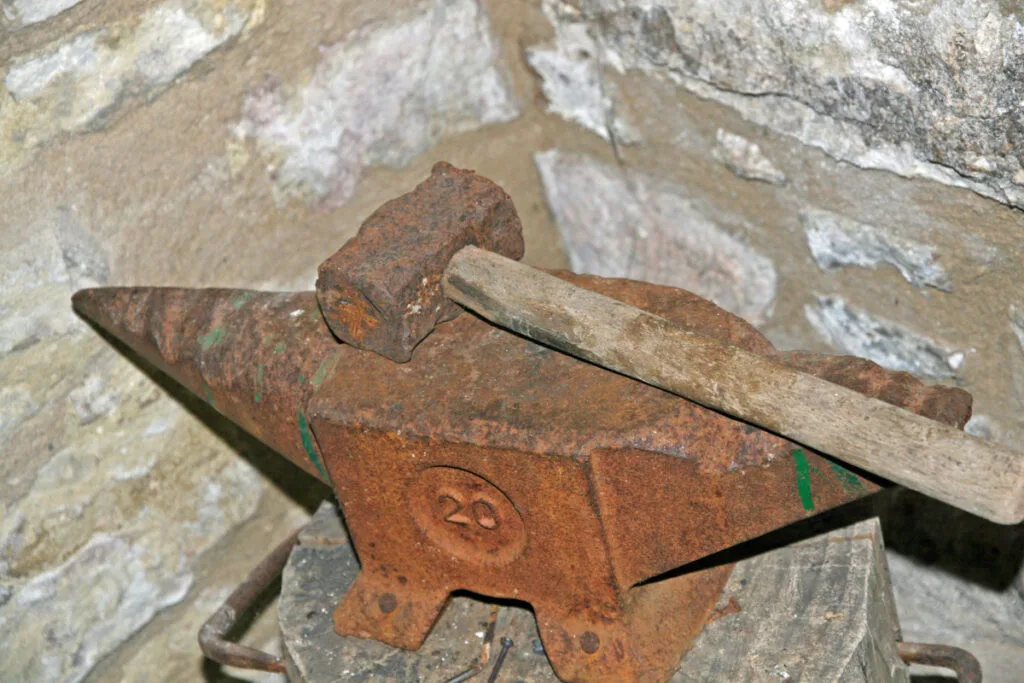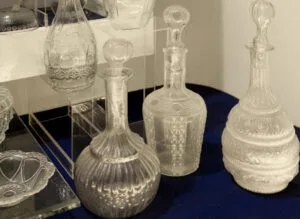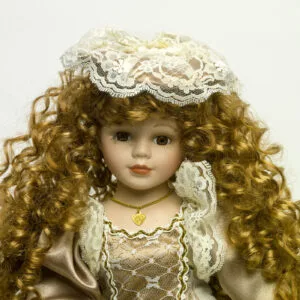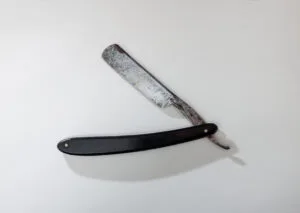If you are a DIY metal buff, you must be willing to collect an antique anvil! But did you see all those bogus anvils in antique shops? Even they look so old! And as expected, dealers price them as they want without knowing much about the details that make them antique!
But at Antiques Know How we are here to help you identify those details and pay the right worth. So, today we bring a detailed guide for you to spot and value vintage anvils! So, just dust the surface, get a hand glass, and let’s do it together!
Key Takeaways
- Look for stamped weights, lugs, and round horns to spot old, handmade anvils easily.
- New anvils are always light and hollow. So, pick a 300 – 400 pounds anvil with hard steel faces for an old make.
- If you don’t want the typical cube anvils, try to find curved or step shapes for better returns. You can also pick bare metal, white, or black anvils to fetch the best value.
- You can choose three types of anvils – bench, saw makers, and farriers. Of these, the saw maker’s anvils are costly, while the other two are cheaper.
Key Identification Features of Old Antique Anvils

Identifying old anvils is an easy, cushy job! Let’s start with the make and material! For this, rotate your piece and see if there are any holes or grooves on the surface. If you see them, the anvil might be new and forged. If not, it’s surely handmade and antique!
Now let’s jump to the parts! Here are some features you can look for:
- Raised 2-3 mm logos with bold letter branding or manufacturer’s name
- 4 – 5 feet with stamped weight, date, and two lugs
- 90% rebound when you drop something on it; no ringing sound
- Colonial look, rugged texture, and a parting mold line at the back
- Casting flaws – voids and imperfect horns with a 3 – 4 inch face
History & Evolution of Antique Anvils
You always see prehistoric tools in crude stone, right? It’s the same with old, handmade anvils! But, the first anvils had no proper horns and faces. As a result, they didn’t sustain the beating and broke down quickly. So, it’s rare to get these ancient models today!
The Iranians made the first wrought-iron anvil in the 1800s. They added flat, polished steps and round horns for ease. However, its thin edge flattened with the beating and needed support. So, its use and production declined, but it is still a precious item today!
Then, it was the era of the Industrial Revolution! And makers aimed to make the anvil more commercial. So, they added long horns and hard steel faces to make the anvil usable! And these have become very common, so obviously you won’t get high returns for them!
3 Types of Antique Anvils & Their Valuation
Do you know that back then, people used different anvils for different uses? So, its value changed with size, shape, and use. So, let’s check out these antique anvil types!
1. Bench Anvils

Bench anvils are like pointed cutters that shape wirework and jewelry. So, they are thin and have sharper horns than others. They will also be about 8 inches tall with a swivel base and hard steel top.
And if you wish to check if your anvil is handmade, look for a hole on its face. If you see one, price your model for $400 – 500. If not, $200 – 300 would be reasonable!
2. Saw Makers Anvil
As you might guess, saw maker’s anvils are the ones used to make old crosscut saws! So, they have a grooved edge and an H-shaped body that holds the saw. They also have vertical steel wool bars to sharpen your tools! These anvils are costly, $1000 – 1500 for one!
3. Farriers Anvil

If you see a long, thin anvil with a short, swelled horn, it’s a farrier anvil. Made in the late 1800s, these shaped horseshoes and covers. Plus, most have a wrought iron base and a steel tooth face. So, they are more precious, at $600 – 700.
6 Factors to Identify & Value an Antique Anvil
Now that you know the basic cost range of different types of anvils, let’s learn about the age, shapes, and other factors that impact their worth!
1. Manufacturing Date & Age

Well, it’s no surprise that old, handmade anvils are worth a lot! This means that the oldest 1700s models with stone faces are the most valuable!
Moreover, if you want it stiff and branded, go with the composite 1800s anvils. And, if you need a usable anvil, go with the new 1900s models.
But what if your anvil doesn’t have a manufacturing date? Well, that’s possible! But you can use these features to check!
How Do the 1700s Anvils Look?
If your anvil has crude, squat iron horns and grooved steps, it must be from the 1700s. You’ll also see a hand-beaten alloyed steel face and stand with this one. Next, check its body material. If it’s stone, it’s costly, at $2000 – 2500. But, if it’s wrought iron, it costs up to $1500.
How Do You Check If Your Anvil Is from the 1800s?
Check if your anvil has a composite construction – half wrought iron and half steel. If yes, it’s an 1800s anvil. You can also look for a hard steel plate and a diamond pattern on its face. Most will also have a solid 80% rebound, hiking the value to $1000.
How Do You Spot Old Anvils from the 1900s?
Look for anvils with a stamped logo and clear cut-steps and edges to spot these! Many might even have a randomness element due to all the hot strikes. Plus, you’ll also see 2-3 mouse holes with a serial number at the base. Overall, they value $100 – 600.
Here are some old anvil serial numbers for reference:
| Year | Age | Serial Number | Anvil Type | Average Valuation |
| 1890 | 133 years | 135633 | Bench Anvil | $300 – 400 |
| 1920 | 103 years | A22749 | Bench Anvil | $200 – 250 |
| 1895 | 138 years | 16953 | Farriers Anvil | $400 – 500 |
Pick anvils with a deformed beating face and fluted edges for an old make.
2. Shape

You might imagine only one rectangular shape with an anvil. But vintage anvils have so much variety – cylinder, half-round, etc. Of these, the geometric, angular anvils cost up to $600. Conversely, the curved ones are cheaper, up to $300.
If you want to know more about antique anvil shapes, check out the table!
| Antique Anvil’s Shape | Average Valuation |
| Uniform Cube, 4-straight sides | $500 – 600 |
| Rounded Rectangle with One Horn | $450 – 500 |
| Rounded Rectangle with Two Horns | $500 – 600 |
| Cylindrical, Half-Round | $300 – 350 |
| Pyramid, Triangular | $100 – 120 |
| Tear Drop Anvil | $100 – 150 |
| Stepped Anvil | $70 – 80 |
Pick anvils with long, linear horns and steps for an old make.
3. Body Color

You only see bare metal or gray anvils these days! Back then, this wasn’t the case! In fact, you can even find bold white, blue, and green anvils from the 1900s. Of these, oxidized black or gray anvils are precious, while powdered ones are cheaper.
And you can even get galvanized or tin-finished anvils for as low as $20.
| Vintage Anvil Colors | Average Valuation |
| Bare Metal or Iron | $400 – 500 |
| Black & Gray | $200 – 300 |
| White & Off-white | $100 – 150 |
| Brown & Yellow | $100 – 120 |
| Blue & Aqua | $80 – 90 |
| Olive Green or Jade | $50 – 80 |
| Brick Red or Orange | $20 – 30 |
Rinse the anvil with 1:2 vinegar to remove the rust and check the color.
4. Antique Anvil Brands
You don’t always have to get an old, handmade anvil for a high value. Even branded ones are precious because of their solid construction and hard steel faces. So anvils signed by ‘Eagle,’ ‘Delta,’ and ‘Anvil Brand’ will hike the cost by 20 – 22%.
But how do you check for the brand logos and other marks? Well, just turn your anvil upside down and observe its throat. You will see a raised logo with a block brand name on the sides.
If not, check the base for any maker stamps or trademarks.
| Old Anvil Name | Manufacturer | Antique Anvil Type | Average Valuation |
| Fisher Anvil | Eagle Anvil Works | Blacksmith Anvil | $1000 – 1200 |
| Fisher Norris Anvil | Eagle Anvil Works | Bench Anvil | $1500 – 2000 |
| Horseshoer Anvil | Cliff Carroll Anvils | Farriers Anvil | $740 – 800 |
| Legend JHM Anvil | Anvil Brand | Bench Anvil | $1390 – 1500 |
| Future Anvil | Delta | Blacksmith Anvil | $1300 – 1400 |
Avoid getting deformed or rusty anvils as they lower the value by 15 – 20%.
5. Anvil’s Metal Type

Get an old hammer and strike it on your anvil’s horn or heel. If you hear a clumping sound, you might have an old, cast-iron, or steel-faced anvil. And you can price such models for $1000 – 1200.
But if the anvil rings, it might have a steel or aluminum body. So, it will be relatively cheaper, at $200 – 500.
6. Anvil’s Weight
Anvil collectors look for heavy, 300 – 400 lbs anvils for a high value of up to $1000. So, anything between 100 – 300 pounds costs less, at $500 – 600. And if your anvil’s weight falls under 100 pounds, it might be new and cheap, at about $50.
How Old Are Antique Anvils?
Anvils over 100 years old are antique, while those between 70 – 99 years old are vintage. So, pick the 1700s or 1800s models for high value.
How Do You Clean an Antique Anvil?
Cleaning antique anvils is relatively easy! Start by degreasing the anvil with a degreaser and use a wire wheel to eliminate the rust. Then, rinse it off with dish soap and coat it with oil or wax.
How Do You Restore a Rusty Anvil?
Brush the anvil with a coarse hair brush and rinse it with anti-rust solutions. Now, you can paint it with enamel or lacquer it properly to reduce rust.
Antique anvils weigh a ton, thanks to their solid metal bodies, large horns, and edges! So, you can just weigh them and check their rebound and stamps to trace the make and brand. Then, check their shapes and colors and add their values to know the total cost!
And if you want to value other vintage metal items, such as ‘old knives,’ ‘old cast iron pans,’ and ‘old plows,’ I’ll be happy to help!
Note: This article is intended for informational, educational, and entertainment purposes only. Some images are illustrative and may not represent actual brands, products, or related entities. All trademarks, product names, brand logos, packaging, and other intellectual property referenced remain the exclusive property of their respective owners. Any brand mentions or references are provided solely for descriptive and educational context and do not imply any formal or commercial association.









